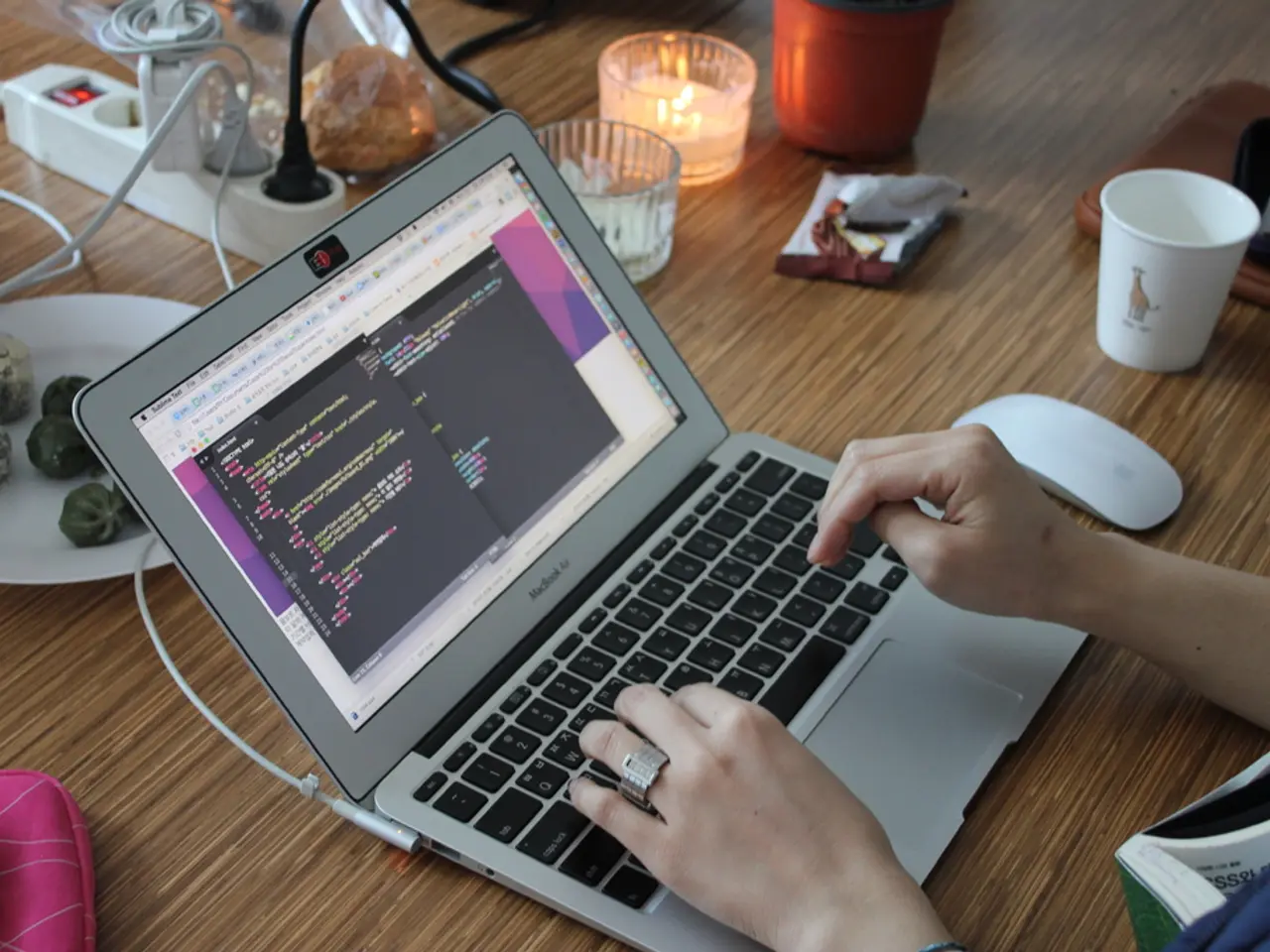Enhancing a More Efficient Laptop Temperature Regulator
In a recent development, Bogdan Micea has automated the control of his laptop cooler using an Arduino Pro Micro and a Rust controller application. This innovative setup allows for a more efficient and automated control of the laptop cooler, creating a smart cooling system that adjusts power according to the laptop's workload.
The hardware modification process involves taking a laptop cooler controlled by physical buttons and mapping their functionality, including detecting how long each is pressed as this affects the cooler's functions. Four transistors are then soldered in parallel with the buttons to allow the Arduino Pro Micro to simulate button presses electronically. The Arduino input pins are connected to the buttons to monitor their current state, and the Arduino USB port is connected to the cooler's original USB power input, maintaining the cooler's external appearance and power source.
The Arduino Pro Micro takes on several tasks, including setting the cooler to a known baseline state on startup, continuously monitoring button states, executing simulated button presses to adjust cooler power levels based on commands received, and detecting laptop suspend states to adjust power accordingly.
The Rust controller application, running on the laptop, monitors the laptop CPU temperature dynamically, sends commands over USB to the Arduino to adjust cooler power automatically, provides a user interface for manual control, and communicates with the Arduino to receive updates on cooler state changes.
This setup effectively creates a smart laptop cooler that adjusts its power automatically to the laptop’s workload, reducing manual intervention and optimizing cooling performance. The use of the Arduino Pro Micro is key because of its USB capabilities and ease of emulating button presses electronically, while the Rust application leverages system APIs to monitor CPU temperature and manage the cooler smartly.
In summary, the Arduino Pro Micro simulates cooler button presses, monitors button states, serves as a USB interface, and detects laptop suspend states. Four transistors act as electronic switches parallel to the buttons, while the Rust Controller App monitors CPU temperature, sends commands to the Arduino, provides a UI for manual control, and communicates with the Arduino. This method creates an automatic, temperature-responsive laptop cooler system controlled over USB with Arduino and Rust.
If you're interested in implementing this setup yourself, you'll need moderate electronics skills for soldering and interfacing buttons with the Arduino, as well as programming skills for developing the Rust controller that handles temperature monitoring and USB communication.
[1] Micea, B. (2022). Automating Laptop Cooler with Arduino Pro Micro and Rust Controller. [Online]. Available: https://www.instructables.com/Automating-Laptop-Cooler-with-Arduino-Pro-Micro-and/ [2] Micea, B. (2022). Laptop Cooler Automation with Arduino Pro Micro and Rust. [Online]. Available: https://github.com/bmicea/laptop-cooler-automation
The Arduino Pro Micro, integrated in this project, not only simulates button presses for the laptop cooler but also functions as a USB interface for smart-home-devices like gadgets and smart-home-devices, showcasing technology that facilitates automation. The Rust controller application, developed for the laptop, communicates with the Arduino, adjusting the cooler's power levels based on temperature and providing automated control, expanding the realm of gadgets and technology.






